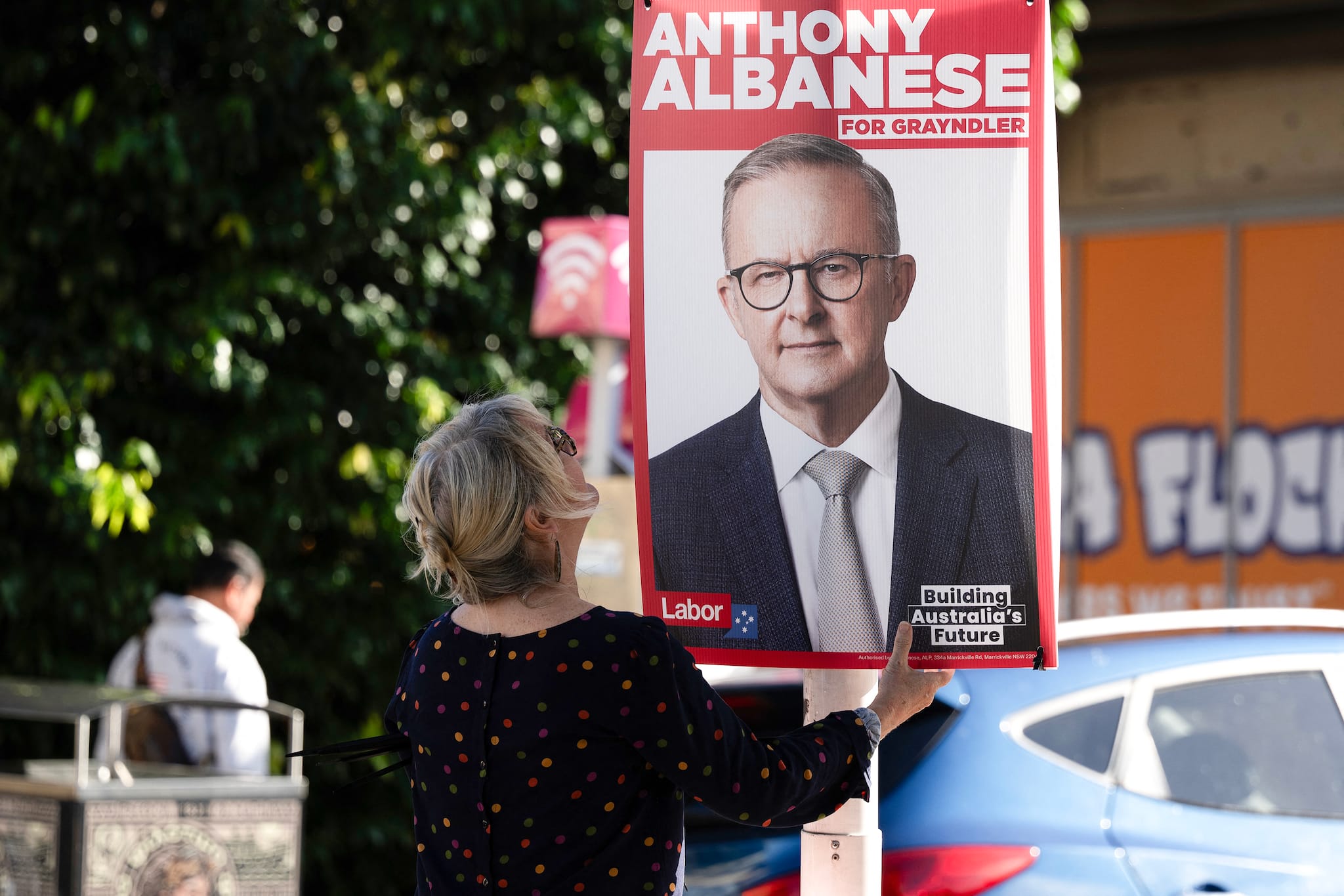
Australia Election 2025 Live Updates: Australians cast final votes in election marked by cost-of-living crisis, global spotlight on conservative shift
Published on 03/05/2025 06:38 AM
Australia Election 2025 Live Updates: Australians are heading to the polls today to cast their final votes in a national election shaped by mounting cost-of-living pressures and global curiosity over whether a Donald Trump-style conservative resurgence could take hold.
The centre-left Labor government, led by Prime Minister Anthony Albanese, is seeking a second term amid economic headwinds and voter frustration over rising housing and living expenses. Challenging him is opposition leader Peter Dutton, heading the centre-right Liberal Party, which has campaigned on promises to steer the country “back on track” following three years in opposition.
Voters will cast their ballots to elect representatives to both chambers of Parliament—the House of Representatives and the Senate. In the lower house, known as the House of Representatives, 150 members will be elected this year, one fewer than the current 151, following a redrawing of electoral boundaries. Members serve a three-year term and are tasked with initiating most of the nation’s legislation.
To form a government, a party must secure a majority of at least 76 seats in the House. If no party achieves a clear majority, the one with the largest number of seats can attempt to form a minority government with the support of smaller parties or independents.
In the upper house, the Senate, which plays a critical role in reviewing legislation, 40 of the 76 seats are up for contest. Senators serve six-year terms and are elected to represent their respective states or territories.
While the contest remains primarily between the Labor Party and the Liberal-National Coalition, several minor parties and independent candidates are also in the fray, potentially playing a decisive role in a closely fought race.
The election outcome will not only determine the next government but could also shape Australia's policy direction on pressing issues such as housing affordability, cost of living, and economic recovery.
In the 2022 federal election, Prime Minister Anthony Albanese’s Labor Party won a narrow majority in the House of Representatives with 77 out of 151 seats, bringing the party back to power after nearly a decade.
The Liberal-National Coalition secured 58 seats, while the Greens won four.
Before Parliament was dissolved on March 28 ahead of this election, the Senate was composed of 30 Coalition members, 25 from Labor, 11 Greens, six from minor parties, and four independents.
Each voter receives two ballot papers:
A green one for the House of Representatives, where they rank all candidates in their electorate by preference.
A white one for the Senate, where they vote for state or territory representatives who will review and amend laws passed by the House.
Australia holds federal elections every three years using a preferential voting system, and voting is compulsory for citizens aged 18 and above.
Failure to vote without a valid excuse can result in a $20 AUD fine (approx. $12.75 USD).
To vote, citizens must be registered on the national electoral roll.
No voter ID is required at polling places.
Australia’s voting system is among the most accessible in the world. Over 500 early voting centres opened on April 22 and closed on May 2, with approximately 4.8 million Australians having already voted ahead of election day.
For Australians living abroad, voting has been available through embassies and consulates, though participation is optional. Those choosing not to vote must notify the Australian Electoral Commission (AEC).
Remote voting has also been underway since April 22.
Special AEC teams have travelled by car, plane, boat, and even helicopter to reach voters in isolated communities, including on Christmas and the Cocos Islands.
Postal voting remains an option for eligible Australians who cannot vote in person.
Here’s how polling hours break down:
Australian Eastern Standard Time (AEST): Polling stations in Queensland, New South Wales, Victoria, Tasmania, Canberra, and Jervis Bay will be open from 8am to 6pm AEST (Friday 22:00 GMT to Saturday 08:00 GMT).
Norfolk Island: While Canberra polling stations are listed for Norfolk Island residents, the island itself has one local polling place open from 8am to 6pm Norfolk Time (Friday 21:00 GMT to Saturday 07:00 GMT).
Australian Central Standard Time (ACST): South Australia, the Northern Territory, and Broken Hill in outback New South Wales will vote from 8am to 6pm ACST (Friday 22:30 GMT to Saturday 08:30 GMT). This also applies to polling locations serving Christmas Island and the Cocos (Keeling) Islands.
Australian Western Standard Time (AWST): Western Australia polls will be open from 8am to 6pm AWST (Saturday 00:00 to 10:00 GMT).
More than 7,000 polling stations across Australia are opening their doors as voters cast ballots in a closely watched federal election, with cost-of-living concerns dominating the national conversation.
Today, polls will operate from 8 a.m. to 6 p.m. local time, but due to Australia’s multiple time zones, voting times vary across the country.
Banks Or IT: Which Stocks Should You Buy Now? | Sectors To Watch | IT Stocks | Stock Market
Stock Market Holiday Jammu Kashmir News Live GT vs SRH Live Score Delhi Rain PM Modi on Shashi Tharoor Odisha 10th Result 2025 Ganga Expressway Indian Rupee Hyderabad Water Crisis IPL Points Table 2025
Business Markets Stocks India News City News Economy Mutual Funds Personal Finance IPO News Startups
Home Currencies Commodities Pre-Market IPO Global Market Bonds
Home Loans up to 50 Lakhs Credit Cards Lifetime Free Finance TrackerNew Fixed Deposits Fixed Deposit Comparison Fixed Income
Home MC 30 Top Ranked Funds ETFs Mutual Fund Screener
Income Tax Calculator EMI Calculator Retirement Planning Gratuity Calculator
Stock Markets
News18 Firstpost CNBC TV18 News18 Hindi Cricketnext Overdrive Topper Learning
About Us Contact Us Advisory Alert Advertise with Us SupportDisclaimer Privacy Policy Cookie Policy Terms & Conditions Financial Terms (Glossary) Sitemap Investors
You are already a Moneycontrol Pro user.